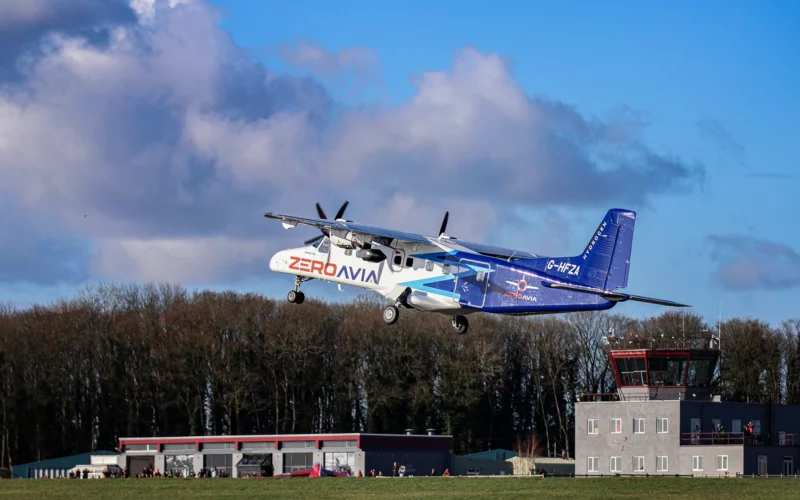ZeroAvia completes flight with hydrogen-electric powertrain

ZeroAvia, a startup developing hydrogen powertrains for aircraft, completed the first flight of its Dornier Do228 demonstrator on January 19. This is the largest aircraft to date to use a hydrogen fuel-cell powertrain,
At 13.35 local time, the retrofitted 19-seater aircraft took off from Cotswold airport in the UK for a ten minute flight using its 600kW ZA-600 powertrain. The hydrogen-electric powertrain, complete with two fuel cell stacks, was running on the aircraft’s left wing. Lithium-ion battery packs provided peak power support during take-off and added redundancy for extra safety. The right wing, in turn, was fitted with a conventional Honeywell TPE-331 stock engine.
ZeroAvia is using hydrogen in gas form for the ZA-600, and the tanks, plus the fuel cell, had been fitted inside the cabin for the test flights. In a commercial configuration, though, the hydrogen tanks would be moved outside, in order to make room for passengers and cargo within the cabin.
ZeroAvia currently has five facilities in operation across the US as well as the UK, where it participates in the HyFlyer II programme. This R&D initiative is backed by the UK government through the Aerospace Technology Institute (ATI) with the aim of advancing the decarbonization of aviation.
The startup is already working on the next iteration of its powertrain, namely the 2-5MW ZA-2000, which will be able to power turboprops of up to 90 seats. A version for jet propulsion is also being considered for a later stage.
The completion of this test flight comes two years after ZeroAvia conducted over 30 flights with an earlier and much smaller demonstrator, a modified six-seat Piper Malibu aircraft powered by a 250kW hydrogen-electric powertrain.
ZeroAvia is aiming to get its system certified by 2025.
